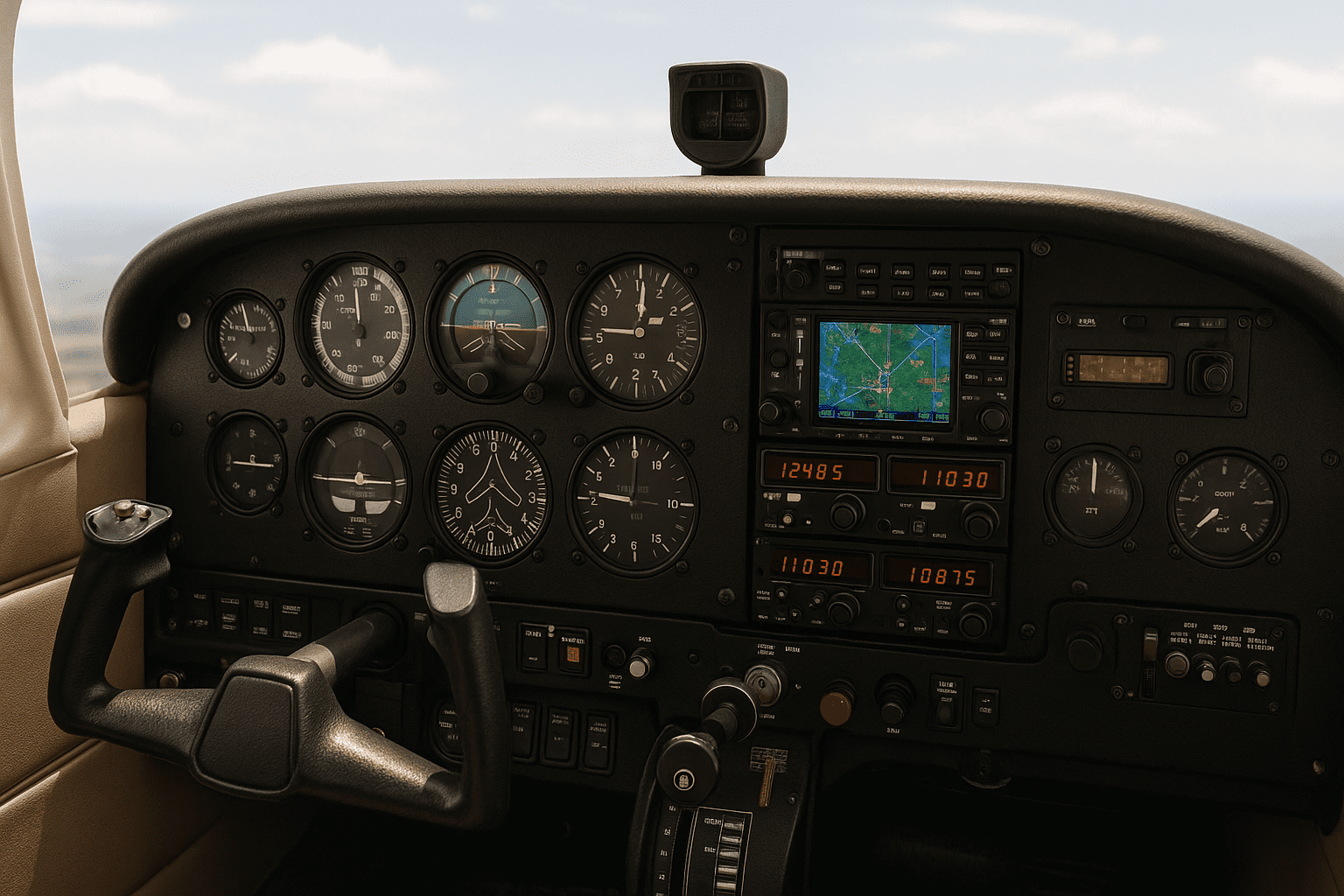Transitioning from traditional round-dial instruments to a glass cockpit is one of the most significant changes a private pilot can make. While it may feel intimidating at first, the transition is absolutely achievable with the right approach and training.
Whether you’ve logged hundreds of hours on steam gauges or just earned your private pilot certificate in a legacy aircraft, this guide will help you bridge the gap and take full advantage of everything a modern glass cockpit has to offer.
Why Make the Switch?
Flying with a glass cockpit isn’t just about having a cool display. It improves situational awareness, reduces workload (once you’re comfortable), and opens the door to advanced features like terrain warnings, synthetic vision, and integrated autopilot. As more rental fleets and flight schools upgrade their aircraft, learning glass is becoming more important than ever.
Key Differences to Understand
Before diving into the transition process, it’s helpful to understand how glass differs from traditional instruments:
- Data is centralized: Instead of scanning multiple instruments, you’ll monitor one or two screens.
- Layout and logic matter: Each manufacturer organizes data differently, and understanding the flow is critical.
- Buttons and menus replace knobs and switches: Familiarity with how to access settings, nav inputs, and checklists is essential.
- Failure modes are different: You’ll need to learn how to recognize and respond to screen or system failures, not just individual instrument malfunctions.
Step-by-Step Guide to Transitioning
1. Start with Ground Training
Jumping into the cockpit without preparation can lead to confusion and frustration. Begin with:
- Manufacturer tutorials: Garmin, Avidyne, and Dynon offer free or low-cost training videos and simulators.
- Training apps and simulators: Use PC-based or tablet apps to practice knob-turning and screen navigation.
- POH and supplement review: Read the Pilot’s Operating Handbook and any avionics supplements for the specific system you’ll use.
2. Learn the System Logic
Every glass cockpit has a logic to how information is presented. Focus on:
- PFD and MFD layout
- Page navigation and shortcuts
- Flight planning procedures
- Engine data interpretation
- Alert messages and annunciations
This is where a good ground instructor or CFI familiar with the system can save you hours of confusion.
3. Take a Transition Flight with an Instructor
Once you’ve done some homework, go flying with a CFI who knows the system. Focus the first flight on:
- Normal operations (takeoff, climb, cruise, descent)
- Use of basic features (flight plan, map zoom, engine monitoring)
- Cross-checking digital instruments with physical backup instruments
- Avoiding excessive “head down” time
It’s okay to feel slow at first. That’s normal. The goal is progress, not perfection.
4. Practice Partial Panel and Failure Scenarios
Glass cockpits may seem foolproof, but they’re not immune to failure. You must be ready for:
- Screen loss (PFD or MFD goes dark)
- Electrical failures
- Incorrect data inputs
- System confusion
Practice flying with screen covers or simulate failures. Make sure you know how to:
- Use reversionary mode (if available)
- Reference backup instruments
- Navigate and land with minimal data
5. Integrate New Workflows and Checklists
Glass cockpits change the flow of certain tasks:
- Preflight checks often include software boot-ups and database checks
- Taxi and takeoff briefings may involve map setup or traffic display review
- Cruise operations may rely more on auto-navigation and engine data trends
Update your checklists to reflect these changes. Use standard callouts and crew-style briefings if flying with others.
6. Stay Current and Keep Learning
Glass skills can degrade faster than steam gauge skills if you don’t fly regularly. To maintain proficiency:
- Fly the system regularly, even if just in a simulator
- Take a refresher flight with a CFI every few months
- Stay updated on software changes and database updates
- Follow system-specific news, forums, and webinars
Mindset Matters
Some pilots resist transitioning because they feel more “connected” to steam gauges or worry about depending too much on tech. That’s a valid concern, but the truth is, glass cockpits are tools. They don’t make you a better or worse pilot—how you use them does.
Stay curious. Stay humble. Stay sharp.
Final Thoughts
Learning to fly with a glass cockpit takes time, effort, and a shift in mindset, but the payoff is huge. You’ll enjoy improved situational awareness, better resource management, and access to tools that can genuinely improve safety when used correctly.
If you’re willing to study, practice, and remain adaptable, you’ll find that flying with glass becomes second nature. The airplane is still the same, and your job is still to fly it. The glass just gives you more ways to do it well.
Sources:
– Garmin G1000/G3X Learning Center
– FAA Advisory Circular 61-136: *Flight Review Guide*
– AOPA: *Glass Cockpit Training Tips*
– Boldmethod: *Glass Cockpit Flying Fundamentals*
Recent Posts
Autopilot is one of the most useful and misunderstood tools in a pilot’s toolbox. For many student and newly minted private pilots, autopilot may seem like something only used in airliners or...
The aviation world is changing, and electric aircraft are at the center of this transformation. For student pilots and new private pilots, this shift brings exciting opportunities along with a few...


